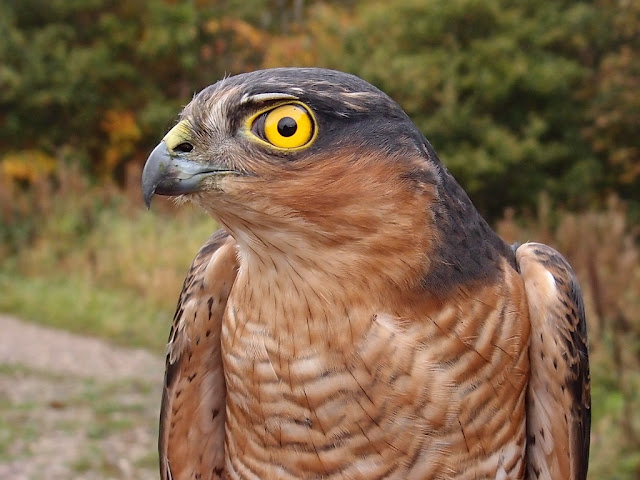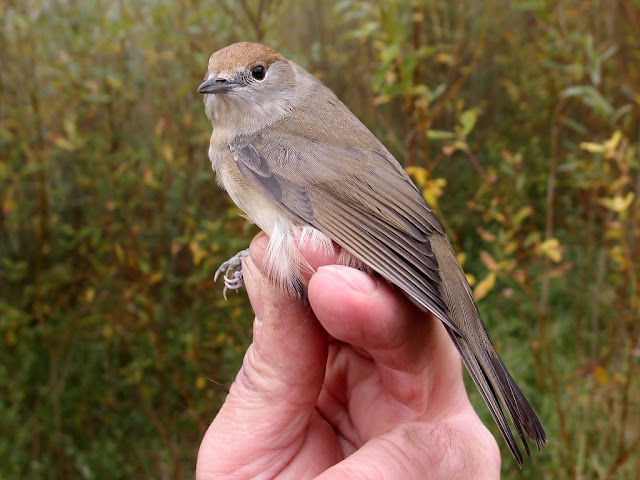The 3 control Goldcrests came at the very end of the session and it was one of those occasions where carrying on after the catching rate had slowed right down really paid off. The ring numbers were from different sequences starting HHJ, EBK and HVB so it will be interesting to find out where they were ringed especially as two of the birds were clearly continental types so may have been ringed during the big influx along the east coast.
The forecast for this morning was for rain clearing about an hour before dawn so I was expecting a good movement of thrushes and more Goldcrests with birds taking advantage of the generally improving conditions and much lighter wind. I was set up for first light but it was after sunrise before things really got going and I was kept busy ringing until late morning. There was plenty of action overhead, not that I had much time to take note of numbers, with the best sighting being a small skein of grey geese that contained 5 Bean Geese and the remainder being Pink-feet.
Again Redwings and Goldcrests made up the bulk of the birds caught but 2 Blackcaps were a nice surprise if not totally unexpected. The first Blackcap was a female that was carrying quite a lot of fat and weighed 20.4g so was probably a departing summer visitor while the second bird was a male and only weighed 16.1g so could well be a freshly arrived winter visitor. A cracking 2CY male Sparrowhawk livened things up and made up for the disappointment of a big female having having escaped a little earlier in the session. Another control Goldcrest was caught and will add to the picture of Goldcrest movements through the site and in the country this autumn.
 |
| Male Blackcap |
 |
| This is the 6th Sparrowhawk to be ringed at Billinge this month and the 11th of the autumn but many more have been seen with up to 5 being seen on several days in recent weeks. |
 |
| What a stunner, male Sparrowhawks don't get much redder than this. |
So another month has come to a close and what an incredible month it has been with 1576 birds having been ringed at Billinge. Redwings have accounted for more than half that number with a total of 860 and Goldcrests have been well represented with 336 ringed. In fact October's totals for both Redwing and Goldcrest exceed their respective totals for the whole of last year and there is still quite a bit of life left in this autumn.




















































